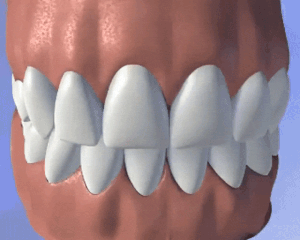Crowns
A crown is a full-coverage restoration that is placed over a tooth that restores the tooth's size, shape, form and function. It is used in cases where there's a cavity too large for a filling, or for a weakened tooth that's likely to break, or is used as a final restoration for a root canal treated tooth.
There are different kind of materials that can be used in crowns, this includes: porcelain, ceramic, zirconia, ceramage, or a combination of materials.




























Fixed Bridges
Bridges are an effective solution for the replacement of missing teeth in the mouth, offering both functional and aesthetic correction. It is called "fixed" as it is permanently cemented in your mouth.
A bridge means that your natural teeth surrounds a missing tooth/teeth on both sides and those existing teeth will be then used as an anchor to help hold your bridge in place. Bridges are made from metal, ceramics, or zirconia or a combination of two.













Removable Dentures
A removable alternative in replacing missing teeth. It can either be a partial or complete. Complete dentures are used when all the teeth are missing, while partial dentures are used when some natural teeth remain.
Not only does a partial denture fill in the spaces created by missing teeth, it also prevents other teeth from changing position.


Fillings
Composite restorations (fillings) refers to the repair of decayed, damaged or discolored teeth using durable tooth-colored materials. Our extra mile is that we restore the tooth to it's natural tooth anatomy for better aesthetics and proper function. This procedure is done directly in the mouth in one appointment.




















Inlays & Onlays
These are considered “indirect” fillings, meaning that they are fabricated outside the mouth, and then bonded to the tooth, usually it is made out of a ceramic or ceramage material.
This is usually indicated for teeth with cavities that is too extensive to be treated with a simple filling — but not extensive enough to need a full-coverage crown.
It is called an "inlay" if the filling fits in between the cusps of a tooth.
An "onlay", if it extends out over one or more cusps of the tooth.
These are effective and more durable than conventional dental fillings.








































Endolay / Endocrown
An "endolay" or an "endocrown" is an alternative way of restoring a root canaled tooth. It is a conservative choice if using a post to anchor a crown is not a viable option. It is minimally invasive to prepare and promotes maximal tissue conservation, restoring function and loss of tooth structure.
Root Canal Treatment (RCT)
This procedure relieves you of your tooth pain and can save a tooth that has become severely infected or decayed. During RCT, the inflamed or infected pulp is removed and the inside of the tooth is carefully cleaned and disinfected. It is then filled and sealed, making the tooth healthy again.
Don't get a tooth pulled because you think its easier or more cost-effective. Missing teeth can cause other teeth to shift, affect your ability to properly chew and ruin your smile. If your tooth is still savable, we strongly advise you to consider RCT to save your teeth.

Oral Prophylaxis
Oral prophylaxis also known as "dental cleaning", is a routine and preventative procedure. On your appointment, a thorough cleaning will be done, removing built-up plaque and tartar. We will also conduct a full dental examination of your teeth, gums, & mouth, looking for early signs of cavities or other diseases. During your appointment, you may need to have x-rays taken. We recommend to have your oral prohylaxis done at least twice a year.

Scaling & Root Planing (SRP)
Are your gums bleeding during brushing and flossing? Do you have red, puffy and inflamed gums? Deep pockets where food and bacteria get caught beneath your gums? Foul odor to your breath that isn’t freshened by mouthwash? Do you have loose teeth?
If you answered yes, then you might have periodontal disease. This disease affects the surrounding tissues of your teeth, namely: your gum, bone, and the fibers holding your tooth (periodontal ligament). This can be treated by SRP, otherwise known as "deep scaling or deep cleaning".
Deep cleanings, can help alleviate this dental health problems by removing soft or hardened plaque from under the gum line, facilitating the healing of gums, and preventing tooth and bone loss and the spread of gum disease.

before
after

**untreated periodontal disease can lead to tooth loss


